Now that macOS Mojave has taken the crown from macOS High Sierra, you’d be forgiven for thinking that no one cares about that old mountain-t...
Now that macOS Mojave has taken the crown from macOS High Sierra, you’d be forgiven for thinking that no one cares about that old mountain-themed OS anymore. But, if you think about the fact that macOS Mojave requires more recent hardware, you’ll realize that plenty of users will be using macOS 10.13 High Sierra for a long time.
And, while macOS High Sierra may have faced its own problems, like password vulnerabilities and other security issues, back at launch – those days are over. Apple has effectively fixed all those lingering problems, and macOS High Sierra grew into quite a respectable macOS release.
Plus, Apple more than made up for any launch issues with that new file system – not to mention those built-in photo-editing tools.
When all is said and done, macOS High Sierra faced – and still faces, to a certain extent – the same problems that Mountain Lion did, following Lion. It brings some interesting changes, but doesn’t do anything all that new and exciting. So, without further delay, let’s dive into everything there is to know about macOS High Sierra.
Cut to the chase
- What is it? The 2017 edition of Apple’s Mac operating system, macOS
- When is it out? Available to install now
- What will it cost? macOS High Sierra is free to download
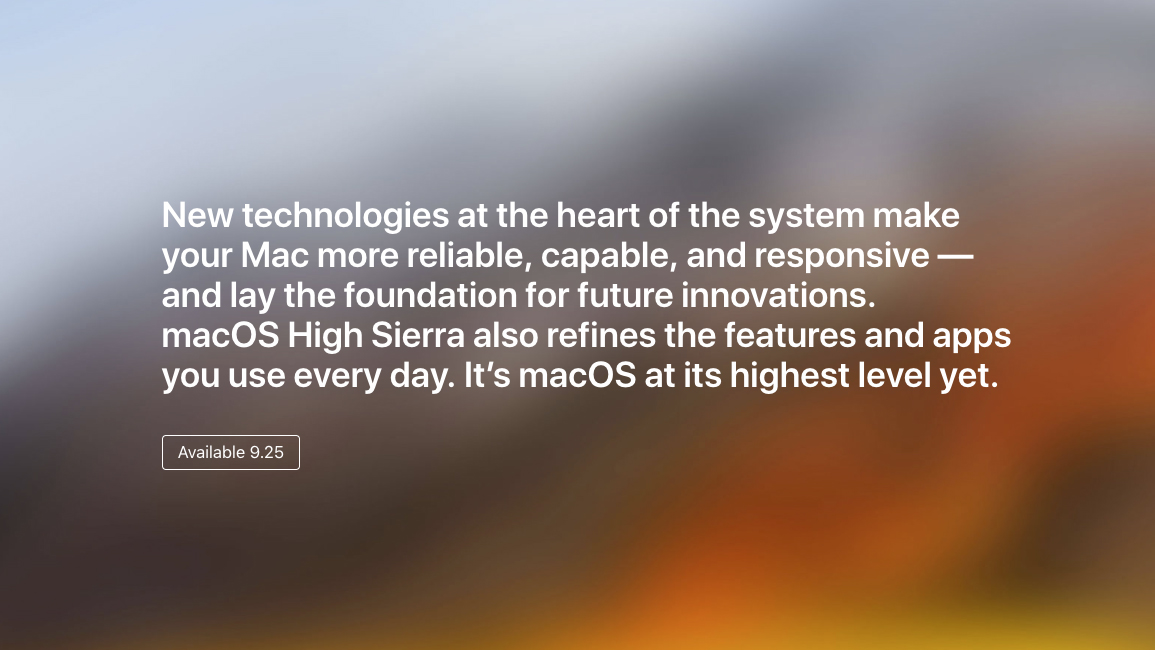
macOS 10.13 High Sierra release date
Apple revealed macOS 10.13 High Sierra at the WWDC 2017 keynote, which is no surprise, given Apple’s tradition of announcing the latest version of its Mac software at its annual developer event.
Yet, it wasn’t until September 12 that Apple revealed that the full release of High Sierra would launch little more than a week later, on September 25. There was a developer version of the operating system you could enroll in leading to the final release, but luckily that’s no longer required to take advantage of the latest features found in macOS 10.13.
The final build of macOS High Sierra, 10.13.6 is available right now. Beside a few bug fixes, it integrates Airplay 2 into iTunes – though you will need to update iTunes to take advantage of it. You can download the update from the Mac App Store. More importantly, this update contains the bug fix that stops the Core i9 MacBook Pro from thermal throttling.
Safari 12 is also available for macOS High Sierra users, which not only supports website icons in your tabs, but also has better security. Websites, for instance, won’t be able to track your specific Mac when using the native web browser.
If you’re ready to jump to the next version of macOS , you can download macOS Mojave today. And, fortunately, we can show you how to download and install macOS Mojave.
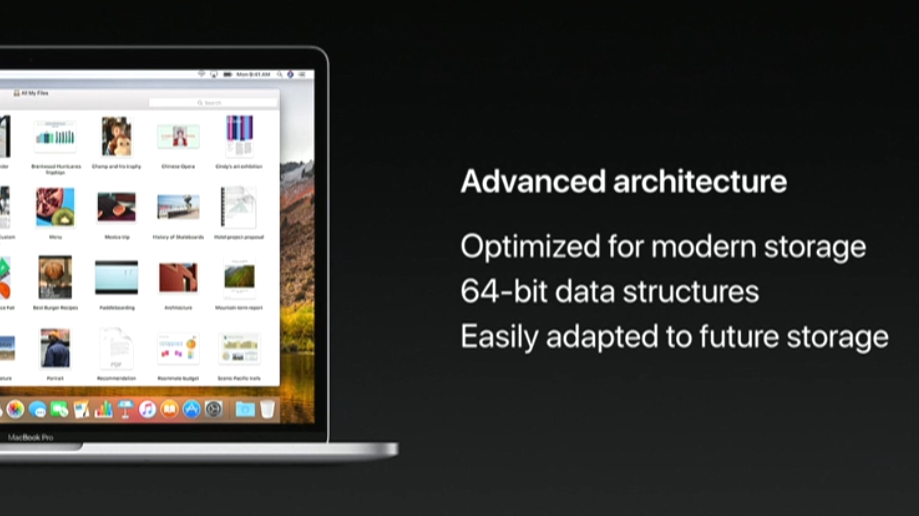
macOS 10.13 High Sierra compatibility
Luckily, because macOS High Sierra doesn’t really shake things up, the barrier to entry didn’t change. In fact, macOS High Sierra has much more lenient requirements than Mojave, so it should be popular for a while. As long as you're on one of the following Mac models, you can upgrade to macOS High Sierra (if you haven’t done so already).
- Late 2009 iMac or newer
- Late 2009 MacBook/MacBook (Retina) or newer
- Mid-2010 MacBook Pro or newer
- Late 2010 MacBook Air or newer
- Mid-2010 Mac Mini or newer
- Mid-2010 Mac Pro or newer
- 2017 iMac Pro
Bear in mind that if you want to take advantage of the High Efficiency Video Coding (HEVC) benefits posed by macOS High Sierra, you’ll need a Mac donning – at the very least – an Intel sixth-generation Skylake processor. Unfortunately, that discounts everything released prior to 2015, but on the bright side, everything else macOS High Sierra brings to the table is fair game.
macOS 10.13 High Sierra features
Beyond the Hackintosh users being reasonably worried about the newly enforced security checks on EFI firmware automatically implemented each week, Apple has revealed a number of awesome new features with macOS 10.13 High Sierra.
These include improvements to Safari – which will now stop ad-tracking and auto-playing videos in their tracks – and a more expansive Spotlight Search in the Mail App. Additionally, when you’re composing emails, the app now allows split view for the compose window – and, to make matters better, it uses up to 35% less disk space.
The Photos app has also been updated, with a better sorting tool to boot. All of this is accompanied by a better layout, improved facial recognition thanks to neural networks, and improved syncing across all Apple devices – this all makes macOS High Sierra’s photo experience better than ever before.
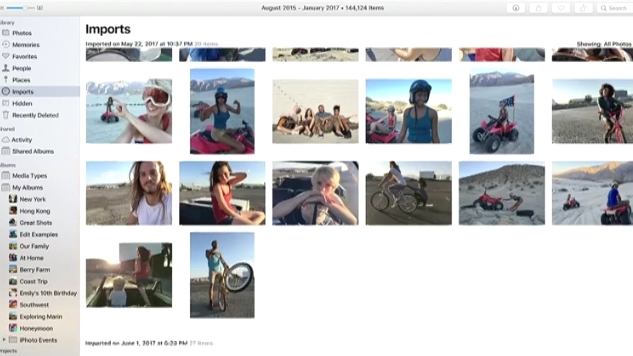
Editing tools, too, have seen improvements, in turn making it easier than ever to enhance the quality of your photos without learning the ins and outs of Photoshop or Camera RAW. And of course, you can count on Instagram-like filters being a part of this.
One of the biggest changes that comes with macOS High Sierra is with the file system. It’s ditching the HFS – which Apple has used for around 30 years, and is now using the Apple File System (APFS) instead.
Every Mac that has been upgraded to macOS High Sierra will receive these file system updates automatically with the exception of those sporting Fusion Drives and older HDDs. Similarly, all new Macs will ship pre-formatted for APFS.
To be exact, APFS is a 64-bit file system that supports native encryption and faster metadata operation. This may all sound a bit techy, but the bottom line is that this will make your Mac feel a lot faster, while also being more secure and more transparent about the nature of your files and folder contents. Unfortunately, this comes with the caveat of Apple’s confirmation that 32-bit apps will be discontinued in later versions of macOS High Sierra.
The update also brings HEVC, or H.265, video compression to the Mac. Apple claims that this new standard can compress video files 40% more than the previous-generation H.264 standard. The end result will be faster video streams at higher resolutions – ahem, 4K – and smaller video files sizes when stored locally.
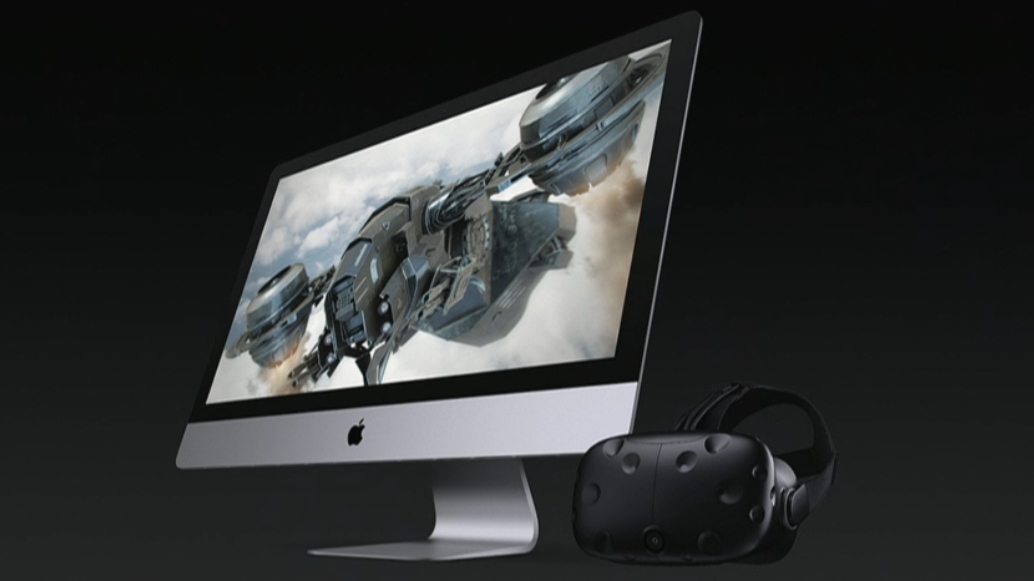
VR finally comes to the Mac
One of the biggest bits of news surrounding macOS High Sierra is that it will finally bring support for virtual reality headsets officially. Namely, the HTC Vive and Steam VR will work with Macs running the new OS this autumn.
However to use such a device, you’ll need at least a 5K iMac or MacBook Pro – or, any Mac that can run the new OS with an external GPU solution. Support for such devices comes part and parcel with macOS High Sierra, but won’t be an active function until later this year.
The good news is that macOS High Sierra comes with a helping of refinements to its graphics API that make up for the scarce GPU support. Metal was a step forward for hardware-accelerated 3D graphics, but with Metal 2, Apple promises less strain on the CPU as well as proper machine learning and better Xcode profiling/debugging in macOS High Sierra.
Perhaps more important, though, is the fact that MoltenVK was recently brought to Mac by Khronos Group. An implementation of the open-source Vulkan API, it’s said to bring frame rate gains of up to 50% in Dota 2. As it’s cross-platform, too – being supported by Windows and Linux as well as Apple’s devices – MoltenVK is likely to be more widely adopted by creators.
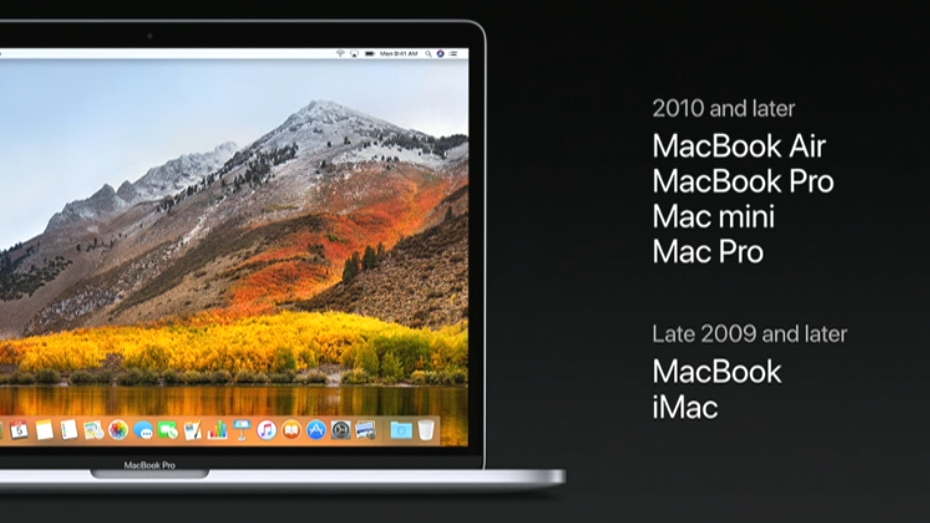
Joe Osborne and Gabe Carey have also contributed to this report
from TechRadar - All the latest technology news http://bit.ly/2swmlsF
via IFTTT










COMMENTS